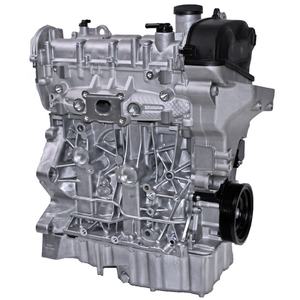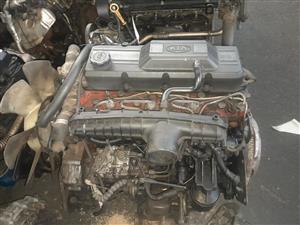Checking Out the Most Current Technical Technologies in Import Engines and How They Improve Driving Experience
In the realm of vehicle design, the landscape of import engines is undertaking an extensive makeover driven by cutting-edge technological innovations. From the evolution of turbocharged engines to the combination of hybrid innovation, the newest improvements are reinventing the driving experience in means formerly unthinkable. As import suppliers press the limits of performance and efficiency through enhanced gas shot systems and innovative engine administration options, the concern occurs: How do these advancements truly impact the means we connect with our lorries when traveling?

Advancement of Turbocharged Engines
In the auto sector, the development of turbocharged engines has substantially changed the landscape of performance and efficiency. Turbocharging, once largely seen in high-performance cars, has now come to be a mainstream innovation embraced by a large range of lorries, from small hatchbacks to luxury cars. The essential principle behind a turbocharged engine is straightforward yet efficient - by requiring more air right into the combustion chamber, it permits even more gas to be burned, causing boosted power output.
Among the essential benefits of turbocharged engines is their capability to deliver even more power from smaller, extra fuel-efficient engines. This downsizing fad has led to a decrease in discharges without compromising efficiency, making turbocharging an appealing alternative for automakers striving to satisfy stringent environmental regulations. Turbocharged engines use improved torque at lower RPMs, giving chauffeurs with a much more receptive and dynamic driving experience.
As technology remains to breakthrough, we can expect further developments in turbocharging, leading to also greater levels of efficiency and effectiveness in the auto industry.
Improvements in Gas Injection Equipments
Modern gas shot systems have actually progressed to provide fuel much more efficiently and precisely into the engine cyndrical tubes, boosting total engine performance and fuel efficiency. One of the vital technologies in gas shot systems is the shift from conventional port fuel shot (PFI) to even more sophisticated direct gas injection (DFI) modern technology.
Moreover, the integration of digital control units (ECUs) and sensors in gas injection systems has permitted for real-time adjustments to sustain delivery based on different variables such as engine tons, temperature, and driving conditions. In addition, innovations in gas injector style, products, and spray patterns have contributed to cleaner burning and smoother engine procedure.
Integration of Hybrid Innovation
The development of fuel shot systems in the direction of greater effectiveness and efficiency has actually set the stage for the smooth integration of crossbreed technology into contemporary engines. Crossbreed modern technology combines making use of conventional interior burning engines with electrical propulsion systems, providing enhanced gas performance and lowered emissions. By integrating electric motors and batteries into the powertrain, hybrid engines can supplement the internal combustion engine during acceleration or low-speed driving, thereby improving general performance.

Boosted Engine Administration Systems
What are the crucial innovations in engine monitoring systems that are boosting the efficiency and performance of modern-day engines? Engine monitoring systems have actually gone through considerable improvements to enhance engine performance and effectiveness. One essential development is the integration of advanced sensors that continuously check numerous criteria such as engine temperature level, air-fuel ratio, and exhaust emissions. These have a peek here sensing units give real-time information to the engine control system (ECU), allowing for precise adjustments to be made to maximize burning processes and fuel performance.
In addition, contemporary engine management systems utilize innovative algorithms and synthetic knowledge to examine the data accumulated by sensors and make vibrant modifications to factors such as ignition timing, gas injection, and turbocharger increase pressure. This level of accuracy and adaptability cause enhanced engine responsiveness, raised power outcome, and reduced gas consumption.
Furthermore, engine monitoring systems now include sophisticated analysis capabilities that can discover and address problems such as misfires, sensing unit malfunctions, and gas system irregularities in real-time, thus boosting overall engine integrity and longevity. These improvements in engine monitoring systems play a vital duty in enhancing the driving experience by delivering optimum performance, fuel effectiveness, and integrity.
Impact of Lightweight Materials
Integrating light-weight materials in engine manufacturing has actually changed the automotive market's technique to improving gas efficiency and performance. Making use of products such as carbon titanium, click here to find out more light weight aluminum, and fiber has considerably minimized the total weight of engines, resulting in boosted power-to-weight ratios and raised fuel economic situation. These light-weight products supply a greater strength-to-weight proportion contrasted to traditional materials like steel, allowing for greater toughness without endangering performance.
Among the key advantages of making use of light-weight products in engine construction is the reduction of inertia, resulting in quicker engine response times and boosted total lorry dexterity. In addition, the lighter weight contributes to reduce energy consumption, making vehicles more environmentally pleasant by lowering exhausts.
Moreover, the application of lightweight materials in engine parts such as pistons, attaching poles, and crankshafts has enabled designers to press the limits of performance without giving up integrity (import engines). This advancement has led the means for a lot more powerful and reliable engines that deliver an exceptional driving experience while meeting rigorous discharges requirements
Conclusion
In verdict, the most recent technological technologies in import engines have significantly boosted the driving experience. From the development of turbocharged engines to advancements in gas injection systems, combination of hybrid innovation, enhanced engine monitoring systems, and using light-weight materials, these technologies have jointly enhanced efficiency, fuel performance, and overall driving characteristics. As technology continues to breakthrough, we can expect also more amazing developments in the future of import engines.
Modern gas injection systems have advanced to deliver gas more effectively and specifically into the engine cyndrical tubes, boosting general engine efficiency and fuel effectiveness - import engines. By incorporating electric motors and batteries into the powertrain, crossbreed engines can click to investigate supplement the inner combustion engine throughout velocity or low-speed driving, thus improving total performance
What are the crucial innovations in engine administration systems that are improving the efficiency and efficiency of modern engines? Engine administration systems have actually undertaken significant developments to enhance engine efficiency and efficiency. From the evolution of turbocharged engines to improvements in gas shot systems, combination of crossbreed technology, enhanced engine management systems, and the use of lightweight materials, these advancements have actually jointly boosted efficiency, gas performance, and total driving characteristics.